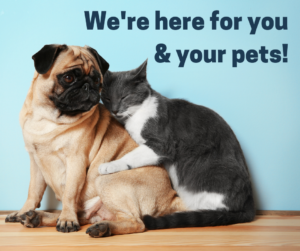 Preventing heatstroke in pets is something all pet owners should know how to do. Heatstroke is a life-threatening condition that requires immediate treatment. As a dog’s body temperature rises above its normal 101.5 degrees, it can experience severe brain, kidney and liver damage. Body temperatures above 105 degrees can also lead to a coma or even death.
Preventing heatstroke in pets is something all pet owners should know how to do. Heatstroke is a life-threatening condition that requires immediate treatment. As a dog’s body temperature rises above its normal 101.5 degrees, it can experience severe brain, kidney and liver damage. Body temperatures above 105 degrees can also lead to a coma or even death.
Signs of heatstroke in dogs and cats include increased panting, excessive drooling, rapid heart rate, seizures, unsteadiness or collapse and gums that appear purple or bright red in color due to inadequate oxygen.
The best way to prevent heatstroke is to avoid the dangerous conditions that cause it! Don’t ever leave your pet in the car, even with the windows cracked – this is a very common cause of heatstroke. A car’s temperature can soar 40 degrees in just minutes, even on a relatively cool day.
Another common and preventable cause of heatstroke is insufficient water on hot days. Take precautions to ensure that your backyard is a safe environment for your pets while it is hot. Provide ample shade as well as a sturdy and sufficient source of water. Sometimes pets will knock over their water bowls in order to make mud to lie in so they can cool off. Consider providing a kiddie pool for your pets to cool off in on hot days outside.
Avoid exercising or playing with your dog in hot, humid weather. Just because it is not 100 degrees does not mean that your pet is immune to heatstroke. High humidity on moderate temperature days can also cause heatstroke. On these days, exercise in the cooler mornings or evenings; bring plenty of drinking water and a damp rag to place around your dog’s neck to keep it cool. As you play, help your dog avoid overexertion; many dogs will eagerly run with you to the point of exhaustion if you let them.
Use extra caution with pets more susceptible to heatstrokes, such as older, arthritic or obese dogs and short-nosed breeds such as Pekingese, pugs, Lhasa Apsos, boxers, bulldogs and Boston terriers; these breeds may not be able to cool themselves effectively through panting. Indoor dogs accustomed to temperatures regulated by air conditioning may also be more susceptible when they venture outside. In addition, dogs with dark-colored coats absorb more heat from the sun, which also may lead to overheating.
If you suspect heatstroke, take action immediately. Your goal is to cool the dog and lower its body temperature without causing the over-cooling that can lead to hypothermia.
Do:
Remove the animal from the situation that caused overheating. Get it in the shade and help it to rest.
Place wet towels over the back of the neck, in the armpits and in the groin region, and wet the ear flaps and paws with water. Rotate these towels frequently. As the water in the towels heats up, it will lose the cooling effect.
Use cool or temperate, not frigid, water. If you use an outdoor hose, test the temperature of the water before using it; the water could be hot from the sun.
If available, position a fan to blow air on the dog.
Call your veterinarian immediately. If possible, take a rectal temperature. The goal is to reduce body temperature to 102.5 to 103 degrees while transporting it to the closest veterinary facility.
Even if the situation appears under control, see your veterinarian immediately. Your dog may need intravenous fluids, and heatstroke may cause lingering problems that aren’t immediately apparent, such as kidney or blood-clotting issues.
Don’t:
Don’t put your dog in an ice bath or use ice-cold water. It would seem natural to use the coldest water possible, but this will actually cause blood vessels near the surface of the skin to constrict, trapping heat and preventing the dog from cooling off.
Don’t force your dog to drink water. Instead, keep drinking water close by while your dog recovers, and only give it some if it appears interested in drinking.
At New Braunfels Feed & Supply, we carry a full lineup for supplies, feed, toys and treats for your pets. We care about pet health!